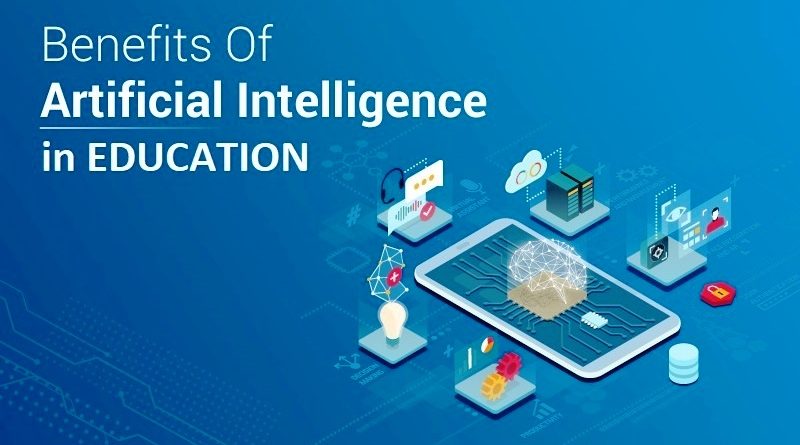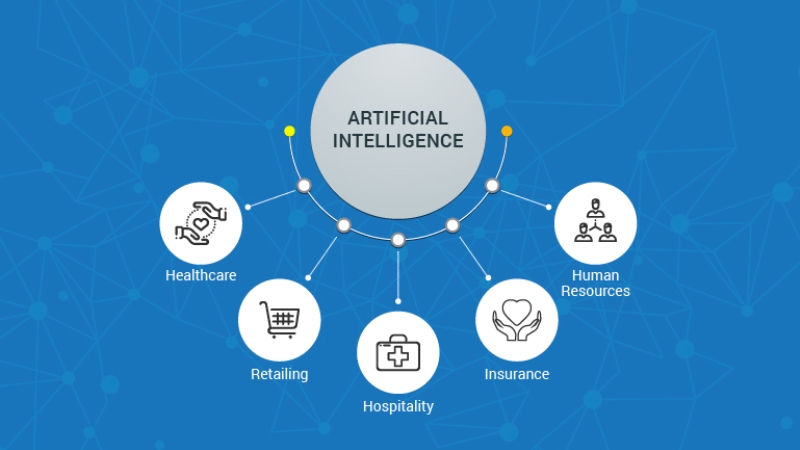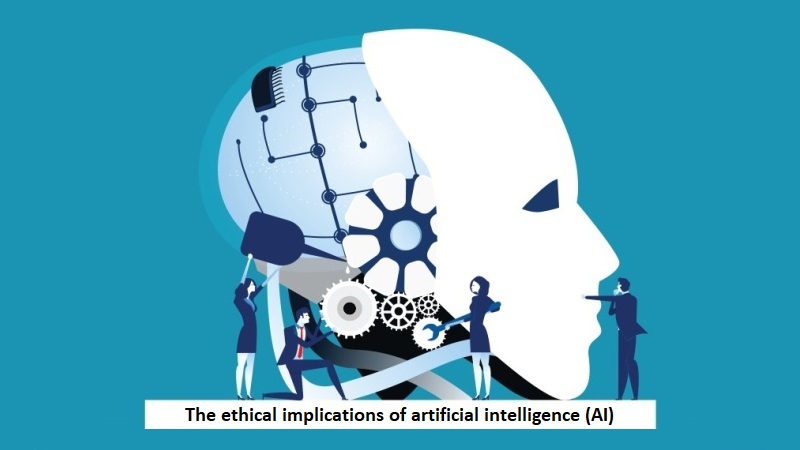How is AI being used in education and what are its potential benefits?
AI is being increasingly used in education to enhance the learning experience for students and provide more personalized and effective instruction. Here are some ways in which AI is being used in education and their potential benefits:
Personalized Learning:
AI-powered educational software can analyze student performance and behavior to develop personalized learning plans that meet the unique needs of individual learners. This can lead to better learning outcomes and improved engagement.
Intelligent Tutoring Systems:
AI can be used to develop intelligent tutoring systems that provide students with real-time feedback and guidance. This can help students learn at their own pace and provide them with the support they need to succeed.
Adaptive Assessments:
AI-powered assessments can adapt to the skill level of the student, providing more accurate assessments of their knowledge and understanding. This can help identify areas where students may be struggling and provide targeted feedback to help them improve.
Automated Grading:
AI can automate the grading process, freeing up teacher time and allowing them to focus on providing more meaningful feedback to students. This can help teachers be more efficient and effective in their work.
Chatbots:
AI-powered chatbots can help answer student questions, provide support, and offer guidance. This can help students feel more connected to their learning experience and improve engagement.
Predictive Analytics:
AI can analyze student data to identify patterns and predict student behavior, such as which students are at risk of dropping out or which students may need additional support. This can help educators intervene early and provide targeted interventions to improve student outcomes.
Content Creation:
AI can be used to create and curate educational content, such as videos, quizzes, and interactive simulations. This can help educators save time and ensure that students have access to high-quality resources that meet their learning needs.
Language Learning:
AI-powered language learning tools can provide students with personalized language instruction, including speech recognition, pronunciation feedback, and interactive conversation practice. This can help students improve their language skills more quickly and effectively.
Virtual and Augmented Reality:
AI can be combined with virtual and augmented reality to create immersive learning experiences that allow students to explore and interact with educational content in new ways. This can enhance student engagement and retention of information.
Research:
AI can be used to analyze large datasets of educational research to identify patterns and insights that can inform educational policy and practice. This can help educators make more informed decisions about how to support student learning and achievement.
Proctoring:
AI-powered proctoring tools can monitor students during online exams to prevent cheating and ensure academic integrity. This can provide a more convenient and flexible testing experience for students while still maintaining academic standards.
Behavioral Analysis:
AI can analyze student behavior and engagement patterns to help educators identify effective teaching strategies and improve learning outcomes. This can help educators refine their teaching methods and personalize instruction for individual students.
Accessibility:
AI can be used to improve accessibility for students with disabilities, such as by providing text-to-speech or speech-to-text capabilities, or by using computer vision to provide real-time captioning or sign language interpretation. This can help ensure that all students have equal access to educational content and opportunities.
Student Support:
AI-powered chatbots and virtual assistants can provide students with personalized support and guidance, such as helping them navigate the college application process or providing mental health resources. This can help students feel more supported and connected to their educational experience.
Curriculum Design:
AI can help educators design more effective curricula by identifying the most important concepts and topics to cover, as well as by recommending instructional strategies and materials. This can help ensure that students receive a well-rounded education that prepares them for future success.
Learning Analytics:
AI can be used to analyze large amounts of student data to identify trends and patterns in student performance and behavior. This can help educators make data-driven decisions about instructional strategies, curriculum design, and student support.
Student Feedback:
AI-powered tools can be used to collect and analyze student feedback on courses, teachers, and learning materials. This can help educators make improvements and adjustments based on student input, leading to a better overall learning experience.
Professional Development:
AI can be used to support teacher professional development by providing personalized recommendations for instructional strategies, identifying areas where teachers may need additional support, and facilitating collaboration and sharing of best practices.
STEM Education:
AI can be used to enhance STEM education by providing interactive simulations and modeling tools, facilitating real-time data analysis, and supporting hands-on learning experiences. This can help students develop critical thinking and problem-solving skills in STEM fields.
Language Translation:
AI-powered language translation tools can provide students with real-time translation capabilities, enabling them to communicate and collaborate with peers and educators who speak different languages. This can help promote cultural understanding and global collaboration.
Student Recruitment:
AI can be used to identify and recruit potential students based on their academic performance, interests, and demographics. This can help institutions attract a diverse and qualified student body.
Career Services:
AI can be used to provide personalized career guidance and support to students, such as by analyzing their skills and interests to suggest potential career paths, or by identifying job opportunities that match their qualifications.
Adaptive Learning:
AI-powered adaptive learning systems can adjust instruction and pacing based on students’ individual needs and performance. This can help students learn more efficiently and effectively, and reduce the achievement gap between high-performing and struggling students.
Student Success:
AI can be used to predict and improve student success by analyzing student data and identifying factors that contribute to positive outcomes, such as regular attendance, engagement in extracurricular activities, and positive relationships with peers and educators.
Student Well-being:
AI-powered tools can be used to monitor and promote student well-being, such as by detecting signs of stress or depression and providing resources for mental health support.
Grading and Assessment:
AI can be used to grade and assess student work, such as essays and assignments, using natural language processing and machine learning algorithms. This can provide more accurate and consistent feedback to students, as well as save time for educators.
Virtual and Augmented Reality:
AI-powered virtual and augmented reality technologies can provide immersive learning experiences, such as by simulating real-world scenarios or allowing students to explore complex concepts in a visual and interactive way.
Learning Management Systems:
AI-powered learning management systems can provide personalized learning paths and recommendations for students, as well as automate administrative tasks for educators. This can improve efficiency and effectiveness in teaching and learning.
Predictive Analytics:
AI can be used to predict student performance and identify at-risk students, enabling educators to intervene early and provide targeted support. This can improve retention rates and student success.
Curriculum Alignment:
AI can help ensure that educational materials and assessments are aligned with learning objectives and standards, reducing the potential for bias and improving the overall quality of instruction.
Accessibility:
AI-powered tools can be used to improve accessibility for students with disabilities, such as by providing real-time captioning or sign language translation. This can help ensure that all students have equal access to educational materials and opportunities.
Gamification:
AI-powered gamification can be used to motivate and engage students in learning, such as by providing personalized rewards and incentives for completing tasks or achieving learning goals.
Social and Emotional Learning:
AI can be used to support social and emotional learning by providing personalized feedback and guidance on skills such as empathy, self-awareness, and relationship building. This can help students develop important life skills and prepare for success beyond the classroom.
Content Creation:
AI can be used to create educational content, such as quizzes and tutorials, based on student needs and preferences. This can improve the efficiency and effectiveness of content creation, and ensure that materials are tailored to the needs of individual learners.
Academic Research:
AI can be used to support academic research in education, such as by analyzing large datasets and identifying trends and patterns in student performance and behavior. This can help researchers generate new insights and theories about teaching and learning.
Language Learning:
AI can be used to support language learning, such as by providing personalized feedback on pronunciation and grammar, or by facilitating language exchanges with native speakers. This can help students learn a new language more efficiently and effectively.
Personalized Learning:
AI-powered personalized learning systems can create customized learning paths for individual students based on their interests, abilities, and learning styles. This can help students learn at their own pace and improve their overall academic performance.
Teacher Professional Development:
AI can be used to support teacher professional development, such as by providing feedback on instructional practices, suggesting areas for improvement, and recommending training and development opportunities. This can help improve the quality of teaching and enhance student outcomes.
Collaboration:
AI-powered collaboration tools can facilitate group work and collaboration among students, such as by providing real-time feedback on group dynamics and communication. This can help students develop important teamwork and communication skills.
Student Engagement:
AI-powered tools can be used to improve student engagement, such as by providing personalized feedback and recognition for achievements, or by using gamification techniques to motivate and reward students for their progress. This can help increase student motivation and interest in learning.
Adaptive Assessments:
AI-powered adaptive assessments can adjust the difficulty of questions based on student responses, ensuring that students are challenged at an appropriate level and reducing the potential for test anxiety.
Time Management:
AI can be used to support time management skills, such as by providing reminders and task prioritization suggestions based on student schedules and deadlines. This can help students develop important time management skills and improve academic performance.
Predictive Maintenance:
AI-powered maintenance systems can be used to ensure that educational technology and equipment is always up and running, reducing downtime and maximizing the utility of these resources.
Curriculum Design:
AI can be used to support curriculum design by identifying gaps in student knowledge and suggesting learning objectives and materials to address these gaps. This can help ensure that instruction is effective and aligned with learning goals.
Data Privacy and Security:
AI can be used to enhance data privacy and security in education, such as by identifying and flagging potential security breaches, or by monitoring data usage and access patterns. This can help protect student and educator data from unauthorized access or theft.
Admissions and Enrollment:
AI can be used to support admissions and enrollment processes by analyzing student applications and predicting the likelihood of admission, as well as identifying potential enrollment trends and patterns.
Career Counseling:
AI can be used to provide personalized career counseling and guidance to students, such as by suggesting career paths based on student interests and aptitudes, or by identifying relevant training and development opportunities.
Predictive Analytics:
AI-powered predictive analytics can be used to identify at-risk students and provide targeted interventions to support their academic success, such as by providing early warning systems for students who are falling behind or by identifying patterns of student behavior that may indicate future academic struggles.
Curriculum Evaluation:
AI can be used to evaluate the effectiveness of curricula and instructional materials, such as by analyzing student performance data and identifying areas where improvements can be made.
Assessment Design:
AI can be used to support assessment design, such as by generating test questions and analyzing student responses to identify common misconceptions and areas for improvement. This can help ensure that assessments are aligned with learning goals and accurately measure student learning.




